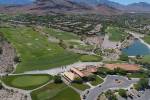Fisherman as artist and scientific researcher
There is something exciting about slipping up to the edge of a small mountain stream with a fishing rod in your hand, especially if the stream is one you have never fished before. First you look upstream and then you look downstream. To you it is all new, and perhaps in some ways it is like a blank canvas to an artist who has yet to determine where to begin working with his first brush stroke. The question is, “Where do you start?”
Finding the answer to that question is all part of the allure of fishing. Primarily because learning a new stream, or any body of water for that matter, requires you to actually fish it. Not once, mind you, because to actually learn how to fish a specific water takes multiple experiences and even experimentation. So when your significant other asks that inevitable question — “Are you going fishing, again?” — you can answer truthfully that you are doing important scientific research.
Naturally, one of the first things to learn about a new stream is where the fish are located because trout are not going to be everywhere. They will be in some very specific spots, and the key to fishing success is learning how to recognize where those locations might be. It was my cousin Brent that first showed me how to read a stream. In other words, how to recognize a potential fish-holding spot. We always called them a hole.
With our pockets full of worms we would work our way along a stream looking for just the right spots. Then somewhere along the line Brent would point to a likely spot and say, “There’s a good hole! Throw your worm in there.” Sure enough, with the right presentation a scrappy rainbow trout would soon have my rod bending toward the water.
One of the keys to recognizing a “good hole” is knowing your quarry and its behavioral tendencies. (Hint: A phrase like that is useful when explaining the purpose of your research.) To conserve their energy stores, trout like to hold in places where they can maintain their position without much effort and let the natural flow of the water bring food to them. You are looking for those areas in the stream where fast water butts up against slow water, where shallow water gives way to deeper water, or where rocks, logs or other structure create even a small spot where a fish can hide but doesn’t have to fight the current.
On heavily fished streams, you will generally find a trail that will lead you to those portions of a stream where a good hole can be found. You just have to recognize it for what it is. Keep in mind that trout prefer deep water to shallow because it makes them feel safe. Perhaps the easiest hole to recognize is one that is created as the water divides and passes around a rock. A pool will form behind the rock and that is where a trout will lay in wait for a tasty morsel to drop in from upstream.
The next step is presenting your bait to the fish. Keep in mind that you want it to look as natural as possible, like a gift from the upstream side of the rock. When using a worm, for example, I will drop it in the water upstream from my target where the natural flow of the water will carry it around the rock and into the hole where a hungry fish will be waiting for something to eat. Be ready, because the initial strike will be quick and you will need to set the hook.
On the other hand, if nothing happens right away, don’t be too quick to pull your bait clear of the hole. Simply let it sit where the fast and slow water meets. This will allow it to move with the water’s flow and may yet entice a fish to bite. I generally make a half-dozen attempts in a given spot and then I move on.
Freelance writer Doug Nielsen is a conservation educator for the Nevada Department of Wildlife. His “In the Outdoors” column, published Thursday in the Las Vegas Review-Journal, is not affiliated with or endorsed by the NDOW. Any opinions he states in his column are his own. He can be reached at intheoutdoorslv@gmail.com.























